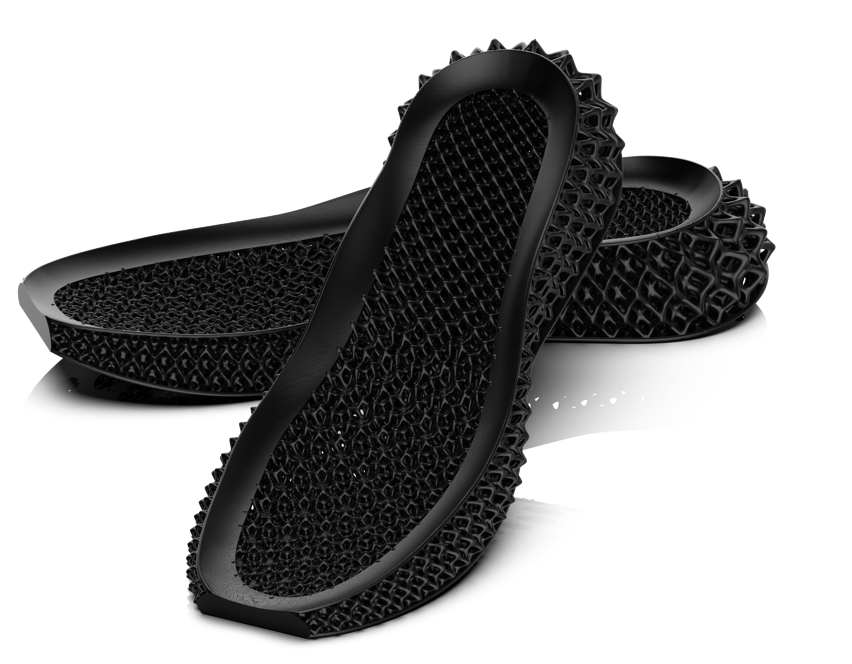Traditional shoe development process required design, modelling and so on before new shoe design can be finalized and go to production line. Traditional shoe development process took more than one week to develop a model and the cost of modelling is highly expensive. If some cases where designer need to make alterations, the time and cost of development will cost more than 10,000 dollars.
All success begins with a good design; however, the market became increasingly dynamic. New product development process time frame continuously being compressed, and therefore it is imperative to implement high end technology to improve the research and development process. With 3D printing technology, it enables new product development at ease. Shoe modelling time shorten from weeks to several hours. Asides that, 3D printing mold have high precision compared to traditional mold making process.

The application of 3D printing technology in the field of footwear manufacturing is mainly in the following areas:
Replacing wooden moulds: using 3D printing equipment can directly produce sand casting prototype in 360 degrees. Furthermore, 3D printing required less production time, manpower, and material while enhancingthe mold details. It also helps to reduce noise,dust and corrosion pollution.
Six sided mold printing: 3D printing technology can directly print the whole six sided mold. The tool path editing process, tool change, platform rotation and other operations are no longer required. The data features of each shoe mold are integrated and accurately expressed. At the same time, the 3D printer can print multiple models with different data specifications at one time, and the printing efficiency is significantly improved. The most efficient mass production printing equipment can achieve an average of 1.5 hours per print, which makes it convenient for designers to evaluate the appearance and design concept of shoe samples and is suitable for the demonstration of product marketing activities.
Trial wear pattern proofing: slippers, boots and other development samples are provided for trial wear before official production. Shoe samples can be printed directly through 3D printing with soft material to test the condition between last, upper and sole. 3D printing technology can directly print the proofing mold, which effectively shortens the design cycle of shoes.
The highly elastic mold printed by 3D printer with fine patterns and smooth surface. Sometimes it is not necessary to polish it at post-process term and it would reduce maintenance costs. The physical properties of the shoe mold, such as toughness, hardness, dimensional stability, temperature resistance, compressive strength and bending strength, are all relatively stable.Through the collection and analysis of data, 3D printing allows the same shoe to be personalized in bulk within a short period of time, based on different consumers' foot shapes, preferences and the cushioning and support required.
The application of 3D printing technology is a technological innovation for footwear manufacturing. Compared to the traditional R&D process, 3D printing technology breaks the limitations of mold on the shape and performance of soles, making shoe customization more precise and even compensating for the shape of the foot.